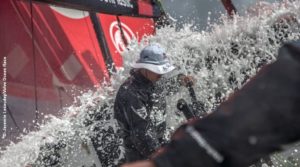Clipper Race: Pioneering Ocean Research

When the Clipper 2017-18 Round the World Yacht Race departed Seattle for the penultimate leg of its 40,000nm circumnavigation of the planet, it was engaging in pioneering scientific research…
One of the eleven ocean racing yachts, Visit Seattle, has been fitted with a special sensor for monitoring the effects of ocean acidification around the US Coast.
The Clipper Race is working with the Port of Seattle, National Oceanic and Atmospheric Administration (NOAA) – an agency within the US Department of Commerce – as well as the University of Washington, Sunburst Sensors and Visit Seattle to raise public awareness of its Ocean Acidification Program, which studies changes in ocean chemistry in response to increasing carbon dioxide (CO2) in the atmosphere, associated with climate change.
The US Coast-to-Coast Leg 7, which is made up of two races from Seattle to Panama and then Panama to New York, will fill a vital gap in the current Global Ocean Acidification Observing Network (GOA-ON), as it’s a route never before monitored by the NOAA.
Not only does ocean acidification endanger ocean and marine life, the wider affect is the interference of a global seafood ecosystem which provides the primary protein source for two billion people around the world, and is an industry which generates billions of dollars for businesses around the US Coast.










